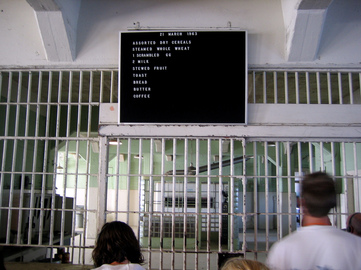CURE Position
Prepared by Charles Sullivan
According to the report of the NY Unified Court System’s prestigious Committee on Alternative Sanctions (including 7 judges and others from legislative, legal, and criminal justice areas):2
Why We Endorse This Position
http://www.curenational.org/position-papers/10-position-alternatives.html
Prepared by Charles Sullivan
- States should develop comprehensive and restorative sentencing options, including, but not limited to: (1) diversion-from-prison programs; (2) community-corrections programs - including residential facilities with rehabilitation programs - such as alcohol and drug treatment, education, mental health services, job-skills development and job placement; and (3) post-release assistance.
- Community-Corrections legislation should be enacted that financially supports such a plan, and provides incentives to counties to divert offenders from prison to community corrections. Local involvement in corrections should be promoted using community advisory boards with members from the following communities: social service, educational, business, religious, and general public. These advisory boards will help to devise and supervise the programs, and provide access to resources.
According to the report of the NY Unified Court System’s prestigious Committee on Alternative Sanctions (including 7 judges and others from legislative, legal, and criminal justice areas):2
- "It is apparent that each year thousands of persons who present no, or a minimal, threat to public safety are being committed to state prison. And this is being done despite the exorbitant costs involved and despite the fact that community-based programs may well be as effective, or appreciably more effective, in rehabilitating these offenders."
- "Obviously, alternative programs, particularly those that offer long-term residential drug treatment, are not only a cheaper form of supervision but also may do a better job than incarceration in rehabilitating certain offenders."
- "The overwhelming percentage of trial judges considers limited program availability to be an obstacle in sentencing offenders."
Why We Endorse This Position
- Such use of alternative justice methods will reduce prison and jail costs, hold people accountable for their crimes, and, without compromising public safety, help offenders to successfully reintegrate into the community.
- For example, the Brooklyn, NY Drug Treatment Alternative to Prison (DTAP) program diverts prison-bound felony offenders to residential drug treatment for 15-24 months. The 19% recidivism rate for DTAP’s graduates contrasts with the 46% rate for similar defendants who did not participate in the program. 1
- Also, Connecticut’s Longitudinal Study compared arrest rates for graduates of their Alternatives to Incarceration Program (AIP) with the rates of comparable offenders sent to prison (DOC). It was found that the alternatives were 2-5 times more successful than prisons in reducing crime of drug offenders! And, of course, the AIPs were far less expensive, too! 3
- C. J. Hynes and S. A. Powers, "Drug Treatment Alternative To Prison of the Kings County District Attorney, Fifth Annual Report of Operations, Oct. 1994 to Oct. 1995."
- "Report of the Unified Court Systems Committee on Alternative Sanctions," Hon. Fritz w. Alexander, II Chair, December 1996.
- "Longitudinal Study finds Lower Re-arrest Rates in AIP," State of Connecticut Judicial Branch Sanctions Update, May 1996 Special Edition.
http://www.curenational.org/position-papers/10-position-alternatives.html

